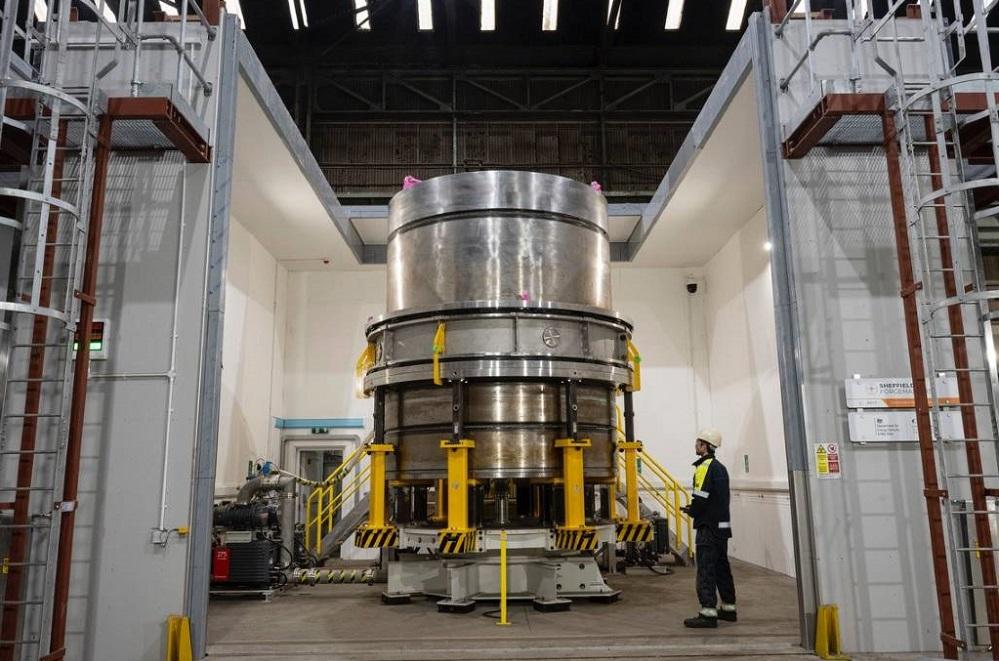
A breakthrough in electron beam welding technology has Josh Welton pondering the process' potential for large-scale nuclear and non-nuclear manufacturing projects.
We rarely open our browsers to see the latest welding-related news, but it's still here.
Yorkshire steelmaker Sheffield Forgemasters recently announced a “global leap forward in welding technology” that could significantly reduce the time and cost of manufacturing small nuclear reactors, which are at the heart of the UK's energy strategy.
The successful development of localized electron beam welding (LEBW) has made it possible to weld very thick steel materials for nuclear applications. Unlike electron beam welding (EBW), which requires the entire weld to fit within a fully enclosed vacuum welding chamber, LEBW only needs to cover the area being welded. And this distinction is important when talking about large works.
I'm no EBW expert, but the basics are: A particle gun (which is awesome) fires electrons into a vacuum where free electrons can exist, which are then accelerated by an electric field. This electron beam can generate enormous amounts of power through flow (current) and acceleration (voltage). The beam is forced through a magnetic lens, which focuses and shapes the beam. With an incredible amount of control, you can adjust the beam to weld with a consistent penetration depth from nearly 0 to 200 mm. The thickness is a whopping 8 inches! The beam is kinetic and requires a very tight attachment, but no filler metal is required. The focused beam allows for deep penetration and surprisingly small widths. No energy is wasted and the heat affected zone (HAZ) is minimized.
Much of the funding for British government-owned Sheffield Forgemaster to develop LEBW comes from a government program explicitly looking to create and deploy full-sized small modular reactors (SMRs) across the UK. provided. SMRs are not built on-site, but are integrated into buildings. Factory assembled and shipped. The aim is for these reactors to be deployed in 2030 and to provide 25% of the UK's total electricity by 2050.
For this purpose, L The transition to LEBW is important. Other than the press release, there are a lot of quotes and not much information about the details, but I think the most important part of LEBW is the ability to weld outside of a completely enclosed vacuum chamber.
Vacuum chambers serve several purposes. This not only allows for free electrons, but is also necessary for the evaporation of the metal. The chamber handles the gas and, very importantly, the radiation produced in this process. EBW is not new, but until now you could only weld what would fit inside the chamber. The SMR requires four 8-inch-thick, 10-foot diameter nuclear-grade welds. material. My guess is that much of the development of LEBW was focused on creating a legitimate vacuum chamber that attaches to the weld rather than enveloping the entire weld.
In an announcement from Sheffield Forgemasters, senior development engineer and project leader Michael Blackmore said: “The implications of this technology for the nuclear industry are huge, with the potential to eliminate the need for costly welding processes. .
“As welded joints replicate the base metal, this not only reduces the need for weld inspection, but also has the potential to dramatically accelerate the rollout of SMR reactors across the UK and other countries. That's how disruptive LEBW's breakthrough is.”
Despite all the keywords from his tech and industry peers, he's not wrong, at least according to their input. It usually takes one year to weld four of these. Sheffield Forgemasters did it in 24 hours.

Yorkshire steelmaker Sheffield Forgemasters recently announced a “global leap forward in welding technology” that could significantly reduce the time and cost of manufacturing small nuclear reactors, which are at the heart of the UK's energy strategy.
As this process continues to evolve, large-scale nuclear and non-nuclear fabrications are likely. Think everywhere you need to weld on a large scale, from defense to specialty structures to energy. What was previously impossible or prohibitively time-consuming may no longer be possible.
The LEBW process allows for consistent, defect-free welds at almost any depth from 0 to 200 mm. Since no filler is used, the weld metal is the same as the base metal. From thin to thick, if it works as Sheffield claims it will be a “disruptive change” for the manufacturing industry.




